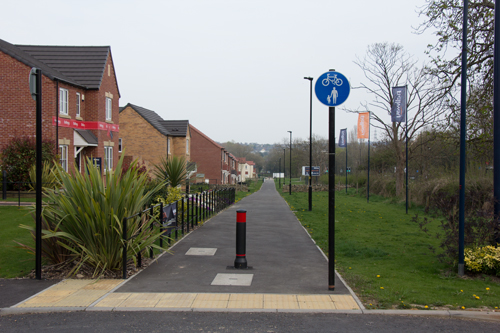Decide and Provide in Oxfordshire

Oxfordshire County Council (OCC) is replacing the traditional ‘predict and provide’ approach to transport with a new ‘decide and provide’ philosophy.
This will apply to the Transport Assessments developers are required to draft to accompany their applications for planning permission. The old model of simply using historic traffic patterns to guess the future road capacity required is out.
Report by the Corporate Director
A report by the Corporate Director explains the new approach. It was one of a number of documents published in advance of an OCC Cabinet decision session on 20th September 2022.
The report discusses how to implement one aspect of OCC’s Local Transport & Connectivity Plan.

In particular, the report seeks to implement Policy 36 from the LTCP, which states that Transport Assessments will have to follow OCC’s decide and provide approach.
Predict and provide uses current or historical traffic patterns to determine the future need for infrastructure. This ‘tends to simply maintain the status quo by perpetuating dependence on the private car through provision of additional highway capacity.’
Decide and provide means deciding on a preferred vision of the future then working towards that. ‘This offers the opportunity for more positive transport planning and helps implement [OCC’s] transport user hierarchy by considering walking, cycling and public transport up front.’
OCC’s new requirements for Transport Assessments are based on the TRICS 2021 Guidance Note on the Practical Implementation of the Decide & Provide Approach.
Instead of simply forecasting which junctions will be over capacity, and expanding them, OCC wants to first consider the extent to which the issues can be addressed by sustainable and active travel provision.

The report also mentions the importance of permitting development in places where there is the best opportunity to:
- reduce the need to travel or
- provide high-quality active travel infrastructure
Requirements for Transport Assessments
OCC has produced a guidance document to implement decide and provide in developers’ Transport Assessments (TAs).
Rather than increasing capacity at junctions, TAs must first consider addressing capacity issues by making provision for sustainable and active modes.

The TA requirements state that failure to provide safe and suitable walking and cycling provision should be an unacceptable impact on highway safety, and therefore grounds for refusing planning permission.

Transport modelling should take account of the LTCP goal to reduce car trips by 25% by 2030 and by 50% by 2040.
Traffic modelling should use scenario testing, with ‘plausible and divergent scenarios’.
Active and sustainable transport infrastructure should always be delivered at an early stage.

Two scenarios that should always be tested are ‘do-minimum’ and ‘with connectivity improvements’.
The connectivity improvements (sustainable travel) may satisfactorily address congestion issues (para 3.5.2). Bus priority measures or walking and cycling provision may be needed to address congestion issues (3.5.3).
If there’s a choice between capacity increase and sustainable/active transport improvement, there’s a presumption in favour of the latter (3.6.4).
Capacity increases for motor vehicles are a last resort (3.6.7). Capacity may be a useful disincentive to private car travel (3.6.12).

Outcomes of the travel plans should be monitored via Monitoring and Evaluation Plans (MEPs) (para 3.7.1).
This gives flexibility, and allows time for behaviour changes to be realised (3.7.9).

